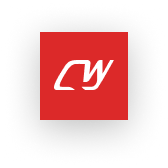Understanding Your Car's NVH System: Do you really need sound damping in your car?
Published On 21/7/2024, 3:36:34 pm Author Uttkarsh SinghEver felt the rumble of the engine vibrate through your seat, or the roar of wind drown out your music? These unwelcome guests are courtesy of your car's Noise, Vibration, and Harshness (NVH). These are the sounds and sensations that automobile engineers meticulously strive to minimize. They understand that NVH is an essential element of a car's user experience, directly impacting occupant comfort, perceived quality, and even safety.

The typical car engine generates a cacophony of noise ranging from 70 to 90 decibels (dB) depending on engine type, speed, and condition. This sound can be further amplified by road noise (around 80 dB at highway speeds) and wind noise (around 60 dB). Fortunately, car cabins provide some natural sound dampening, typically reducing noise by 10-15 dB. However, achieving the near-silent serenity experienced in luxury cars like a Rolls-Royce requires a multi-layered approach that goes beyond basic cabin materials.
The evolution of NVH saw advancements like computer simulations to predict noise behavior, leading to targeted noise reduction strategies. India, with its growing focus on car quality, has embraced these advancements. Maruti Suzuki's adoption of lightweight, high-strength steel in the Baleno for better noise insulation exemplifies this trend. Globally, breakthroughs like Hyundai's active noise cancellation system in the Genesis, which uses strategically placed microphones and speakers to cancel out unwanted engine noise.
NVH components
Here's a breakdown of the key elements and components that contribute to effective NVH management:
Elements:
Noise: This encompasses all unwanted sounds that intrude into the car's cabin. Sources include engine noise, road noise (tire roar and rumble), wind noise, and even sounds from within the car itself (seat adjustments, rattles).
Vibration: These are tremors or shaking sensations felt through the steering wheel, seats, or floorboard. They can be caused by engine imbalances, road imperfections, or loose components within the car.
Harshness: This refers to the unpleasant, jarring sounds associated with bumps, potholes, or sudden acceleration. It's often a combination of noise and vibration that creates a more disagreeable sensation.
Components:
Sound-Absorbing Materials: Felt, foam, and other sound-absorbing materials are strategically placed throughout the cabin and engine compartment. These materials absorb and dissipate sound waves, reducing their intensity before they reach the passenger compartment.
Isolation Materials: Rubber bushings, mounts, and isolators are used to decouple (separate) vibrating components from the car's body. This prevents vibrations from being transmitted through the chassis and into the cabin.
Damping Materials: Materials like butyl rubber mats can be added (often aftermarket) to further dampen vibrations within specific car body panels. This reduces panel resonance and the resulting noise transmission.
Engine Design: Modern engines are designed with NVH in mind. Features like balanced crankshafts, smooth-running camshafts, and engine mounts that absorb vibrations contribute to a quieter engine operation.
Aerodynamic Design: The shape of the car and its underbody can significantly impact wind noise. Careful aerodynamic design helps reduce wind turbulence and minimize wind noise intrusion into the cabin.
Active Noise Cancellation (ANC): This advanced technology uses microphones and speakers to create sound waves that cancel out unwanted noise frequencies. ANC systems are typically found in luxury cars and offer a significant reduction in engine and road noise.
Is Sound Damping Required
Craving a peaceful sanctuary on wheels but turned off by the constant hum of the engine or the roar of the road? Sound damping might be the answer you're looking for. It's like adding an extra layer of quietness to your car.
Think of it as noise insulation for your car. These special mats or liners absorb vibrations and block out unwanted sounds, creating a more serene driving experience. This translates to clearer music, less fatigue on long journeys, and a more refined feel to your car. But is it a must-have? Not necessarily.
It depends on your priorities. If you're a budget-conscious driver or someone who doesn't mind a bit of background noise, the standard soundproofing in your car might suffice. But for audiophiles seeking crystal-clear music or those who value a truly tranquil driving experience, sound damping can be a worthwhile investment.
Pros and Cons of Sound Damping
Pros
Peace and Quiet: The biggest perk is a significant reduction in road noise, engine hum, and wind whoosh. This translates to clearer music, less fatigue on long drives, and a more premium feel to your car. Audiophile's Dream: Sound-deadening materials create a sonic canvas for your sound system. Reduced noise pollution means clearer highs, tighter bass, and an overall more immersive listening experience. Double Duty: Some sound-deadening materials also act as thermal insulators, helping maintain a more comfortable cabin temperature year-round.
Cons
Weight Gain: Adding these materials can add a few extra pounds to your car. While minimal, it could slightly impact fuel efficiency. DIY Dilemma: Installing sound damping can be a complex process. Depending on the extent, professional installation might be necessary, adding to the cost. Modification Mystery: Removing interior panels to apply damping materials might require minor modifications, potentially affecting the car's aesthetics or resale value.
















